Women to the Front: Inside the creation of ‘Riot Women’
Sally Wainwright’s new all-female British rock drama reignites the feminist fury of the riot grrrl movement, while also setting the stage for new contemporary voices, as alt-rock duo ARXX provide the original music
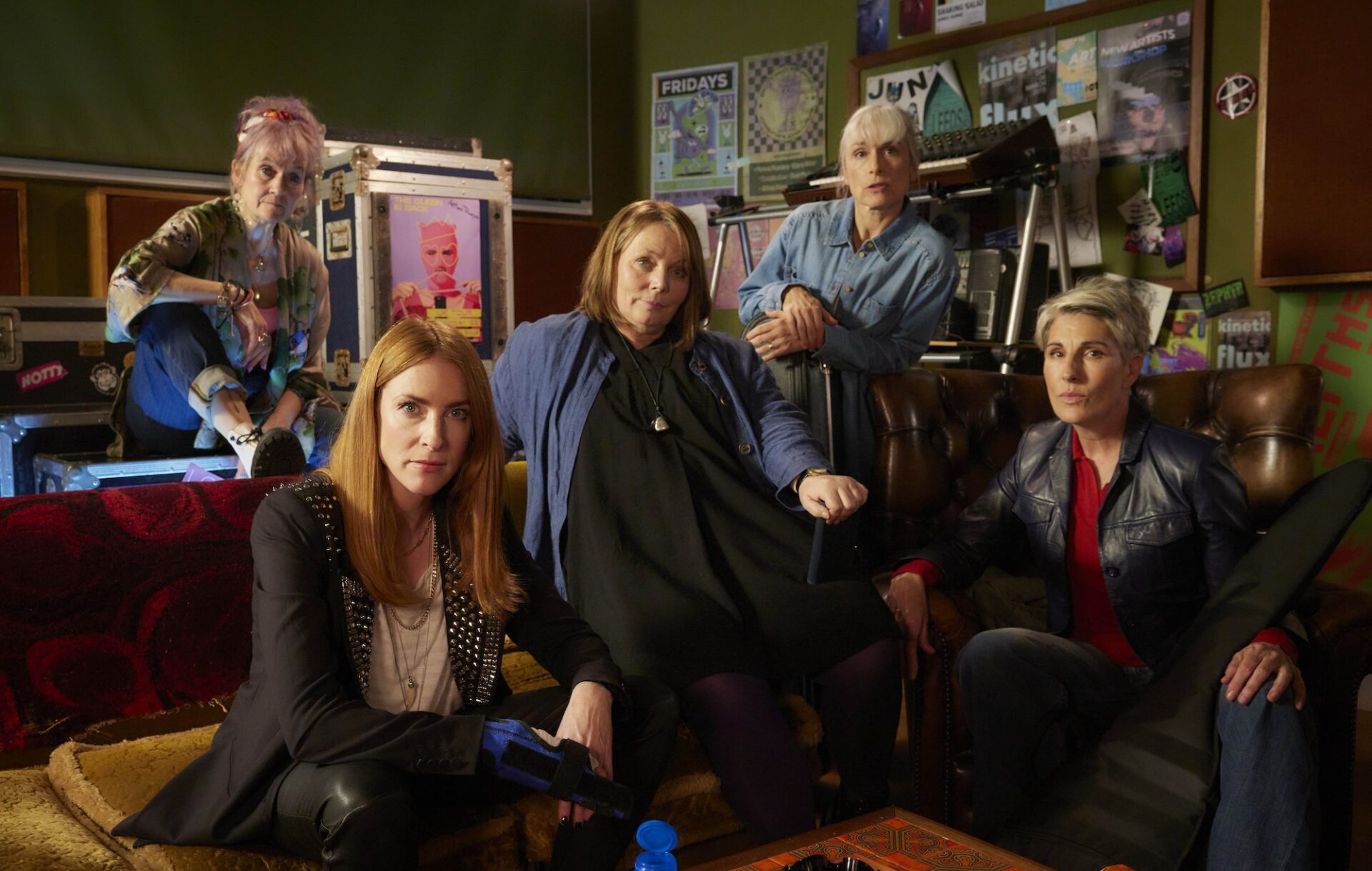
Do you think women of a certain age can become invisible?” asks Beth Thornton, one of the lead characters in Sally Wainwright’s forthcoming BBC series Riot Women.
In the series’ opening scene, Beth (played by The Thick of It’s Joanna Scanlan), a teacher “of a certain age”, has, frankly, had enough. Between a failed marriage, draining job, a dependent mother, and an adopted son that has no time for her, she’s been pushed quite literally to the edge. She pours herself a large G+T, steps onto a stool, and lifts a rope over her head, prepared to step away from it all with permanent consequence. That is, until a phone call from her friend Jess (Lorraine Ashbourne) presents her with another option: “Do you want to be in my rock band?”
With both the offer and the lingering irritation of her boss, students, son and brother fresh in her mind, Beth spontaneously heads to a music shop to buy a new keyboard. There, she bumps into one of her students, who asks the name of her band. His tone of bemusement, coupled with the riot grrrl poster she spots on the wall, prompts her to solidify the concept of the band as a reality: Riot Women.
Over 30 years on from the riot grrrl movement, this new six-part series from the creator of Happy Valley finds a group of five “middle-aged, menopausal women in suburban Yorkshire” grappling with their place in the world. Joining Beth is retired police officer Holly (Tamsin Greig), nurse Yvonne (Amelia Bullmore), publican Jess, and shoplifting freeloader Kitty (Rosalie Craig). Brought together from different walks of life, they initially form the band to enter a local talent contest, but in writing their first original song discover that music is a means of reestablishing their sense of self, of re-taking up space, and of channelling their rage into a collective “fuck you”, all while discovering community, catharsis and confidence along the way.
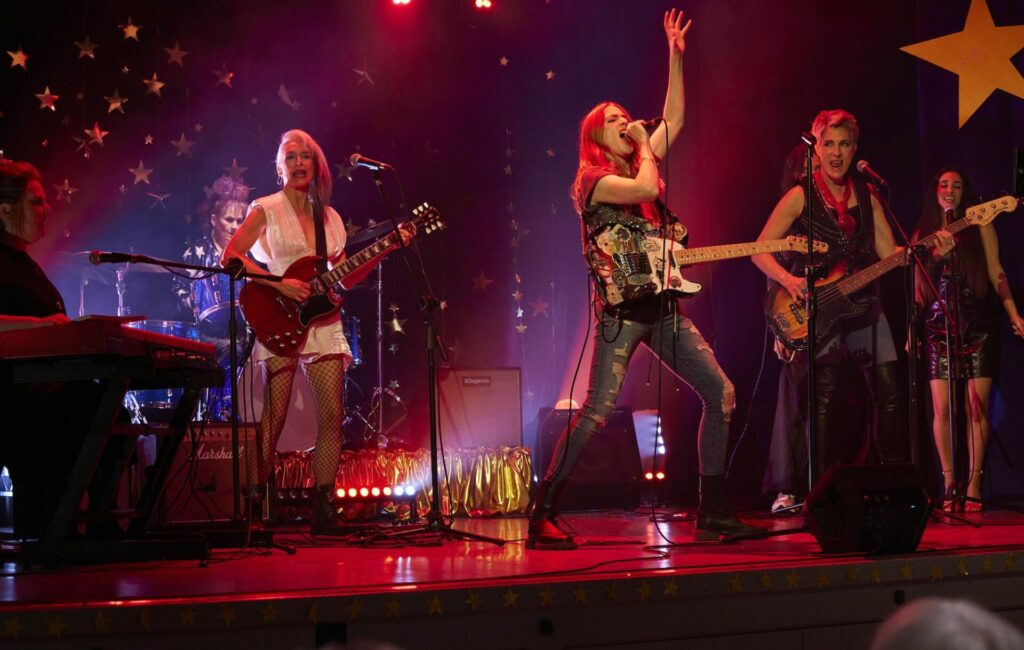
Woven into the very fabric of what the Riot Women band learn and practise is the ethos of riot grrrl, the original early-90s underground feminist punk movement spearheaded by Bikini Kill’s Kathleen Hanna and represented by bands like Heavens to Betsy, Huggy Bear and Bratmobile.
The movement was born out of a desire to challenge society attitudes that conflated being a girl with being ‘dumb’, ‘bad’, or ‘weak’, but also to highlight the importance of show-ing up for one another, irrespective of lived experiences. When performing, Hanna, then 23, would make the rallying cry of “Girls to the front!” demanding that space be taken up by those who would traditionally be pushed to the back.
One of the riot grrrl manifesto points feels especially relevant to Riot Women: “non-hierarchical ways of being and making music, friends, and scenes based on communication + understanding, instead of competition + good/bad categorisations”. It’s a point Scanlan touches on when discussing anger and punk, and what seems to be the biggest teaching of Riot Women, that “musical skill was secondary to expression”.
Her character’s early scene in the music shop delivers another punk reference. “You thought The Clash were angry,” says Beth. The action then cuts to Kitty, a woman Beth is yet to meet, who will become the band’s lead singer. Pent-up and intoxicated, Kitty jumps atop a former lover’s car and smashes it with a stolen sledgehammer. As she does so, she casts a strikingly similar silhouette to Paul Simonon on The Clash’s infamous London Calling album cover, an image that became immortalised as an iconic symbol of the rebellious punk rock spirit.
Continuing with the theme of rage, Scanlan tells me, “The idea of being feminine does not usually embrace the idea of anger. I think that’s really a central tenet of the drama.” The actor, who remembers punk from the first time around, recalls it as a pure force of working-class anger at what the world meant and the limitations there were for everyone. “I think what Sally’s trying to talk about is there’s got to be an outlet for the resentment and the feelings of fury and rage about what modern society does to all of us. But the accumulation of it when you get older is quite strong. And I think these women are all at the point of just having had enough.”
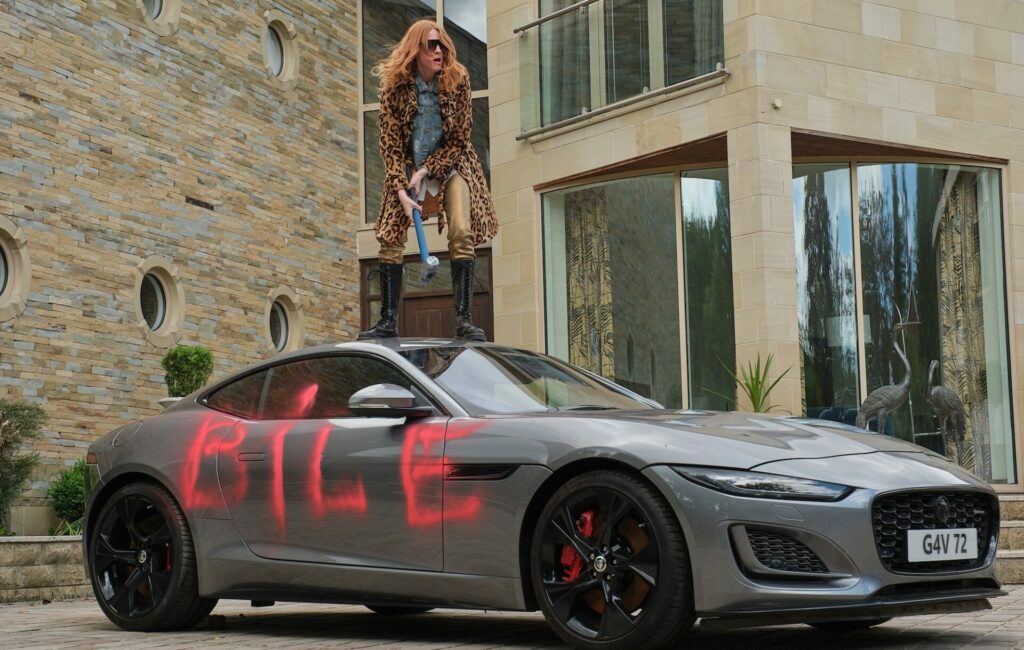
From the off, it’s clear that Wainwright doesn’t intend to rely solely on the nostalgia of punk and riot grrrl sonics to ensure the success of the new series, which she has described as being scarily exciting. “Anything with Sally at the helm of it is always going to be a cultural moment,” says Craig.
Aside from early references to Hole, Bikini Kill, Skunk Anansie and Garbage, Riot Women gives flowers to new, strong female voices in music, including those of Billie Ei-lish and The Last Dinner Party, not to mention the involvement of Brighton two-piece ARXX, who have written the show’s original music.
Having cut their teeth in the DIY punk and feminist scenes of Brighton, ARXX’s Hanni Pidduck and Clara Townsend, who are both in their thirties, produce music that traverses themes of queer love, joy, mental health and trans rights. The experience of working with Wainwright offered them the opportunity for a poignant generational exchange, and an authentic perspective on why music – and the spirit of punk, specifically – can provide community and catharsis, particularly for underrepresented groups.
As talk turns to writing songs with underlying themes of menopause and ageing, guitarist Pidduck says, “I think it wouldn’t have worked if we had tried to pretend like we under-stood the experience. I think as much as we can’t relate to that [at] our point in life right now, there’s so much of the characters that we can relate to, like this lack of representation, this being silenced, feeling like you’re inadequate just based on what you were born with rather than any sense of merit.”
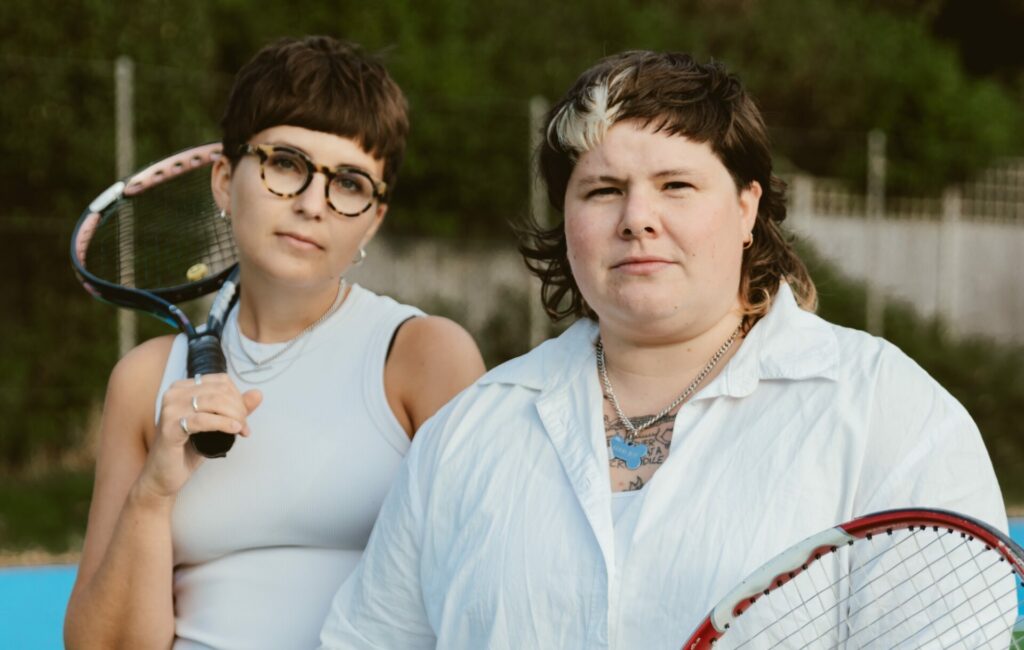
Navigating the characters’ profiles outlined by Sally, the duo found common ground in the way they are made to feel by society. They cite Davina McCall’s documentary Sex, Myths & Menopause as a starting point, which left them feeling “fired up”. It allowed them to relate more to the people in their own lives, prompting discussions of these themes with their friends and their own mothers.
Drummer Townsend’s mum instantly found humour in the pair’s approach to the tracks. “It’s good that that kind of got the target audience. It’s nice that it did relate and we could see it firsthand relating,” Townsend recalls. As for their involvement as ARXX, they hope to open the show up to a younger, queer audience, broadening the reach and raising aware-ness for the underrepresentation of menopause (they describe those who raise its profile as “doing God’s work”), and also of the lack of older women or non-binary and trans folk in bands.
Wainwright has seemingly been addressing this head-on, not just through the show, but in learning the drums herself throughout the show’s production and in collabo-rating with ARXX through voice notes and shared notation to work a beat into the band’s favourite track, ‘Seeing Red’. “I hope that it [the show] encourages people to just start and try music,” says Townsend. Ultimately, the end goal doesn’t have to be a perceived level of professionalism, you can learn an instrument (“The actors have all learnt their parts,” Pidduck points out), but the act of starting a band can be about so much more.
This give-it-a-go attitude is synonymous with the DIY ethic long associated with punk and the riot grrrl movement. It’s an ideology to be embraced beyond the sonics of punk, with the DIY or Die mantra (as depicted by a sticker on Kitty’s guitar) feeling all the more vital to these women as something of a literal lifeline, especially where the storyline pulls on threads of mental health and suicide. “You break down that wall of expectation that you have to be given permission to do things,” explains Pidduck. “They’re [the band] feeling like they need to be given permission to act a certain way and then they find a space where they don’t actually have to do any of that. Once you’ve broken down one wall, you realise that the other ones don’t exist.”
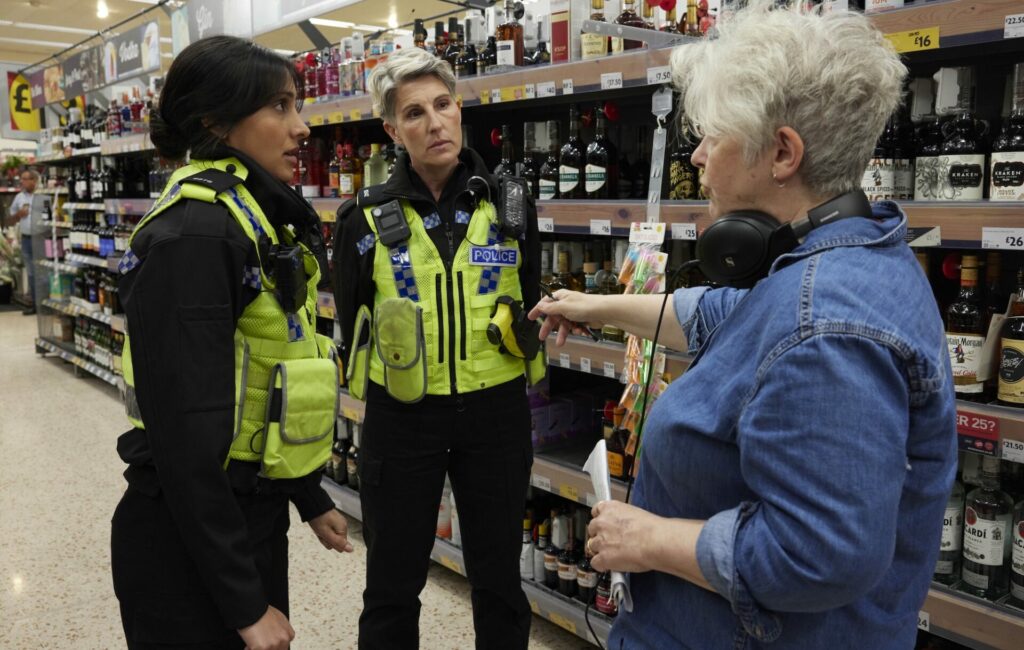
The Riot Women soon discover that music is a way to reclaim their autonomy. “They’re the wife, they’re the mother, and actually having something just for you or having some-thing that you’re not defined by… [They’re] trying to create a new shape, really,” says Craig. She references the sneering reactions these women face from their immediate families as they discuss their intentions to join a band at their age, yet it’s noted early on in the series that they would have been afforded the luxury to start much sooner had they been male. What they discover is how much fun it is to play music with other people.
Scanlan elaborates, highlighting the ultimate “pinch point” between conforming to mounting standards for women, who are expected to look after everybody else but are also thinking, ‘Hang on, how long have I got left and what else do I want to do with my limited time?’
What DIY teaches on a broader level beyond the physical act of making music is a means of regaining control and architecting an environment in your own vision. It’s all the more necessary for underrepresented groups, with ARXX describing the DIY space as pivotal to giving voice to those that aren’t usually allowed to be heard, even more so at a time when Government policy is coming into place to “squash” minority voices.
“You need these spaces to realise that you can say what you need to say,” Pidduck elaborates. “You can feel what you need to feel, and you can have that community and you can just make it happen.” Riot grrrl used these DIY ethics to bypass traditional, mainstream media and cultural gatekeepers in order to generate art, music and literature that spoke to them, that they felt represented by, and to make it easier to see, hear and share each other’s work.
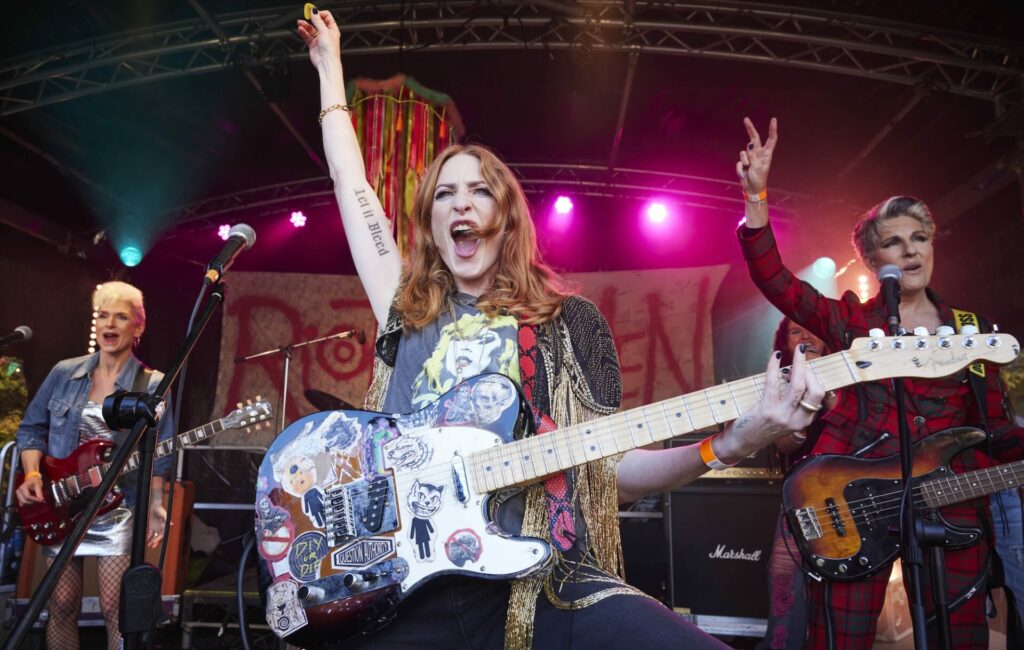
Craig’s excitement for the role and for what it taught her is palpable. With numerous West End appearances under her belt, she’s no stranger to the stage, but found using her voice in a new way through punk and rock incredibly freeing. Her greatest joy, though, was found in being the only band member who didn’t have to learn a new instrument. It meant she could watch her co-stars throw themselves into their instruments and love it with “no sense of competing,” she recalls with a smile. “It was just a sense of wonderment at the fact that Lorraine could just suddenly play the drums, or Tamsin could play the guitar, and Amelia and Joanna on the keys.”
Both Scanlan and Craig draw comparisons between the act of making music with others and the process of listening and responding that you practise as an actor. “I think one of the biggest takeaways from it is that, fundamentally, if you play music with people, you get to know them in a very specific way. I feel like you actually know each other quicker be-cause, ultimately, you have to listen,” says Craig.
Scanlan concurs, adding, “The process of music-making was as important as the end result of the concert, for me, creatively. As an actor, there’s no more special thing than play-ing in with another actor on stage or on screen and knowing that you have a connection that’s above and beyond your everyday life, and it felt the same as that. Like you were in another world and you’re connecting soul to soul. I just love that feeling.”
The onscreen relationship between Beth and Kitty is a real testament to the idea of the empowering sense of “seen-ness, heard-ness, held-ness” you can receive from putting yourself out there socially and creatively, regardless of whether you make it out of the practice space, as ARXX describe it. “I really think that they save one another and, partly, they save one another through music,” says Craig.
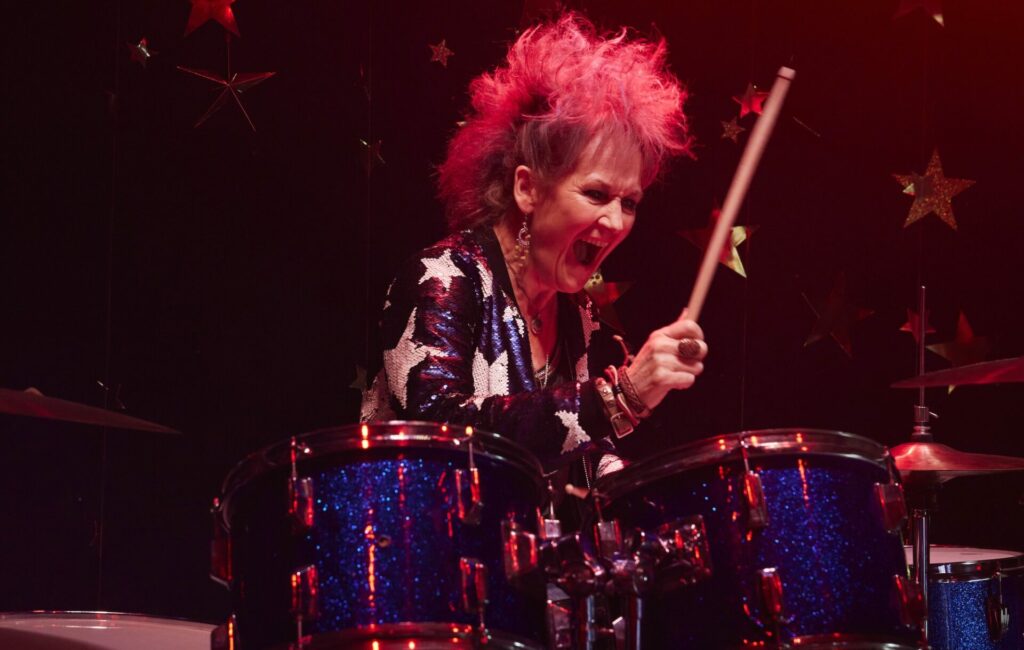
Bolshy Kitty, a jobless sofa-surfer with a criminal record and traumatic past, and Beth, a lonely and exasperated teacher and homeowner, cross paths and form an unexpected bond through a musical language which allows them to share, explore and find common ground. Where Beth softens Kitty, Kitty empowers Beth. “Kitty gives them a sense that they don’t have to be tidy, you can be brave and they can unpick themselves slightly,” Craig says of her character.
Scanlan agrees: “I guess that’s about opening your eyes to your opportunities and not just staying in your lane. Life is kind of fun when you don’t stay in your lane. It’s explosive what happens between them.”
This level of connection and community was felt on a wider level for Scanlan, who saw the cast of supporting actors as something of a focus group, describing them as feeling emboldened by what was being filmed. They were able to express themselves, to have fun and to laugh on set. It’s something the actor hopes the whole audience can feel, that central to the show is to “a) get on with having fun, and b) telling your story, getting out there and expressing it”.
The themes are universal in how Wainwright presents very real, complex human problems, meaning that the show, while tackling themes of menopause and middle age, doesn’t pigeonhole its audience. Craig reflects on the relatability of its characters’ journeys: “All of us can look at a human going through something and either totally feel that we can relate to it or certainly aspire or feel like we want to create change fundamentally in our lives just because it resonates on that level.” She adds that music offers an opportunity to talk about difficult topics, and that you can “actually connect with somebody who is completely at the other end of the world”.
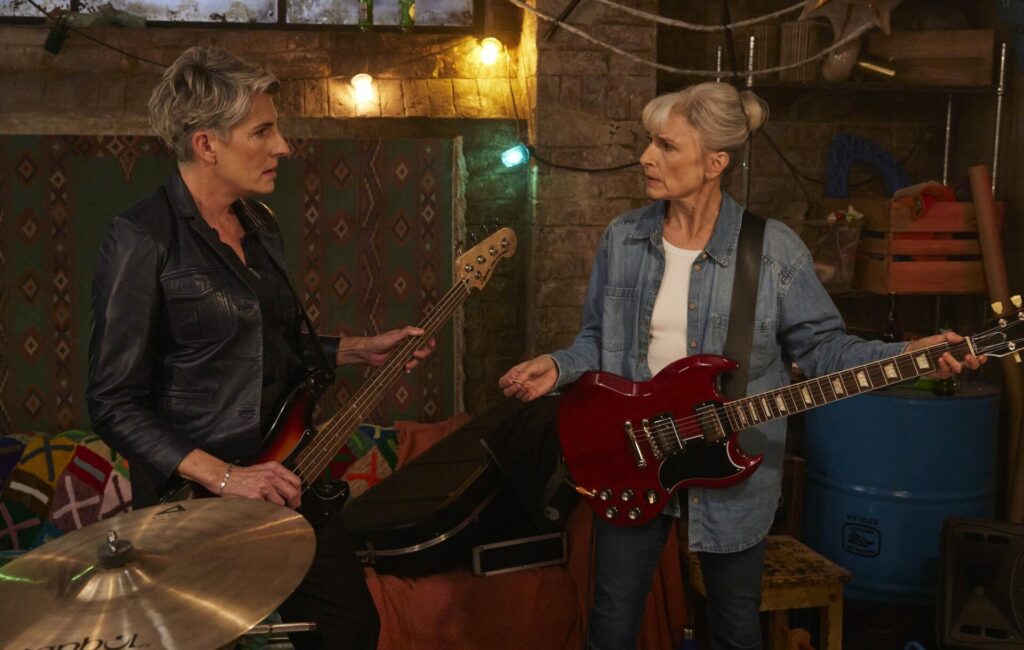
As far as ARXX’s involvement is concerned, the duo have certainly won fans in both leads, with Craig praising what they’re saying as young people in the world as “amazing”, and Scanlan likening picking her favourite ARXX original in the show to the idea of “choosing between her children”. For the band, their love of the show is in the enriching message it sends, and how it tells a story which can be accessed by everyone because you don’t realise how political it is.
“Riot grrrl has not disappeared, it’s just evolved,” says Pidduck. “But for people thinking that that was something that happened and doesn’t happen anymore, go to a gig, hun.” With that in mind, can we expect to see Riot Women live in the future? Craig is keen, and her eight-year-old daughter even more so. “I’ve still got the guitar that Kitty has in the show, and she’s having a go,” Craig recalls with a grin. “I just thought, ‘Well, that’s great if you’ve come to see me at work and it’s inspired you to pick up an electric guitar.’”
And the incentive for older women, trans and non-binary people? “We have many more stories to tell. If anything, older artists should be celebrated more,” ARXX conclude. “I hope the show gives a little bit of that energy.”
